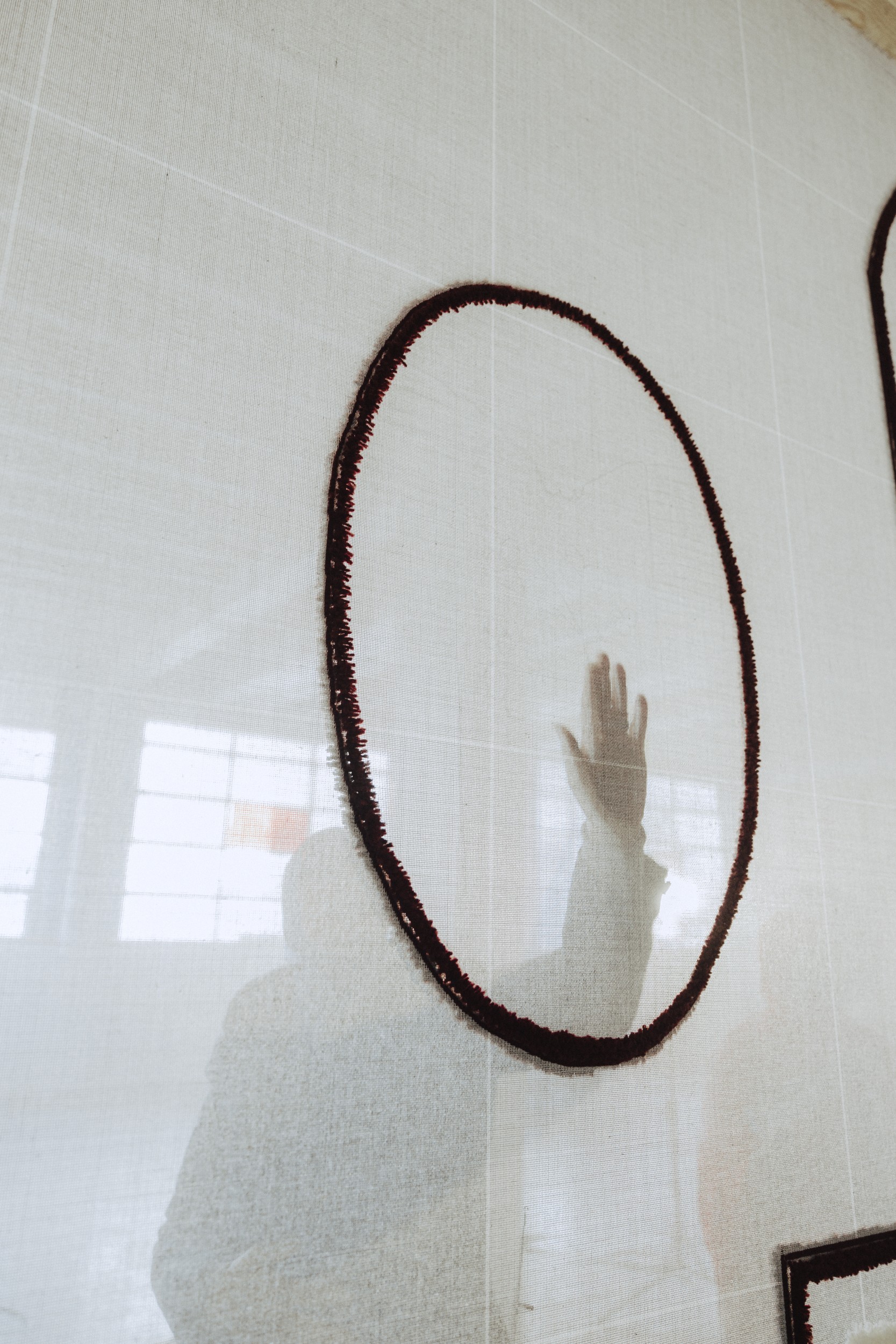Le rideau de saison, Maak & Transmettre, 2024 • © Lucile Dizier
The name of our Brussels-based collective “Maak & Transmettre” evokes two kinds of activities: Maak comes from maken in Dutch, which means “to do”.
To do, to design, to work on making things functional for everyone: that’s what brings us together. Our projects are based on experimentation, creating spaces, and projecting through designs or models. Over the years, this has given birth to a collection of textiles for interior design. These are objects in their own right: curtains, carpets, trellised panels and, little by little, furniture as well. It’s about industrial and textile design. So why is the reaction often the same when you’re a woman and you say you’re a textile designer:
“Ah, so you sew!”
Quite often this comment comes from our male colleagues - industrial designers - since textiles are seen as a sub-category of design, which the boys club views as less worthy. Why must a woman who creates necessarily create in a domestic way? Is domesticity still the only acceptable category for us female designers? How is it that men still get most of the prestigious jobs when women make up the majority of design students? Why aren’t we considered specialists in our trades? Our trades are thought of as less “technical”, and less essential, more like hobbies than a profession. And then comes the issue of compensation. If our work isn’t considered to be a real trade, how can we justify our salaries?
These observations led to the creation of our lecture series, known as “Celles qui font le design” or “Women Who Design”, each September in Brussels. Women in design are in cutting-edge, highly technical professional fields. They work! They are fighting, we are fighting, to be paid properly. We want our worth to be recognised for more than just beauty or care giving*.
Where are these women? They aren’t found in history or design books. Still there is a
female genealogy, buried but quite real, that we have to uncover. A huge amount of work has to be done, but we’ve known since the beginning that it will forge a community that’s ready to work with us and make their contribution to fostering sisterhood.
Our ambition? To do justice to those women who have been forgotten or erased. We aren’t claiming this to be the start of a movement, but we are affirming the urgency of one, particularly at a time when the world’s political context is so fragile.
This is why the “Transmettre”, or “Transmit”, part of our activities has so much meaning. It is not simply about sharing knowledge, but also about discussing our experiences and comparing our different viewpoints, such as with our project “Le tapis comme langage”, or “Carpets as Language”, a workshop for women in literacy training. It’s an opportunity for co-creation where stories and symbols converge. These symbols include windows, a recurring motif in our creations, a metaphor for what we are trying to build: an opening, a multiplicity of perspectives to enrich our understanding of the world through design.
This gaze is essential! We shine a light on these multi-faceted women, on these FINTA** persons. To put an end to their invisibility and to recognise the richness of their knowledge. So that we can finally say: “Ah, so they design!”. •
*Care giving
Taking care of others.
Role often assigned to women because of traditional gender roles.
**Finta
Female, Intersex, Non-binary, Trans and Agender.
